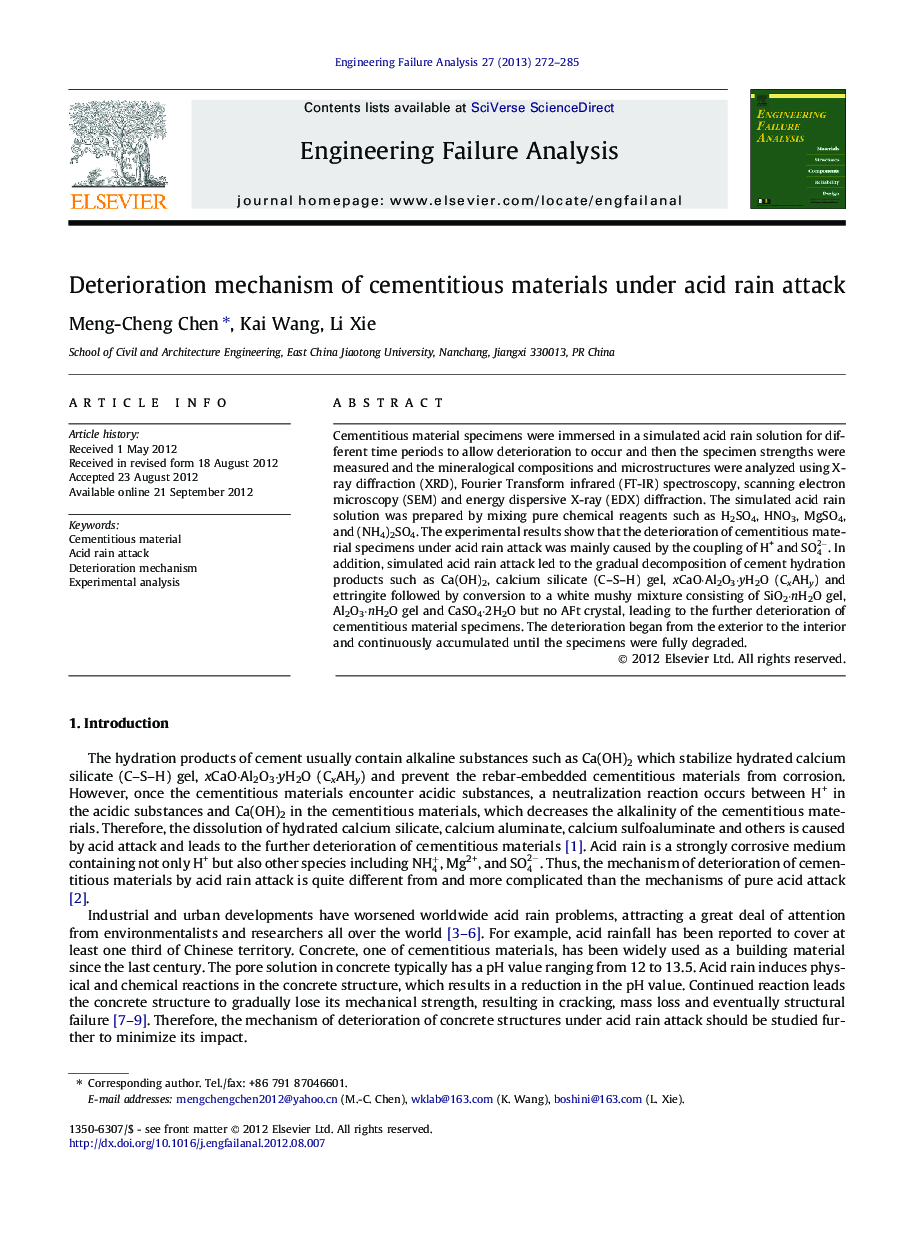| Article ID | Journal | Published Year | Pages | File Type |
|---|---|---|---|---|
| 774162 | Engineering Failure Analysis | 2013 | 14 Pages |
Cementitious material specimens were immersed in a simulated acid rain solution for different time periods to allow deterioration to occur and then the specimen strengths were measured and the mineralogical compositions and microstructures were analyzed using X-ray diffraction (XRD), Fourier Transform infrared (FT-IR) spectroscopy, scanning electron microscopy (SEM) and energy dispersive X-ray (EDX) diffraction. The simulated acid rain solution was prepared by mixing pure chemical reagents such as H2SO4, HNO3, MgSO4, and (NH4)2SO4. The experimental results show that the deterioration of cementitious material specimens under acid rain attack was mainly caused by the coupling of H+ and SO42-. In addition, simulated acid rain attack led to the gradual decomposition of cement hydration products such as Ca(OH)2, calcium silicate (C–S–H) gel, xCaO·Al2O3⋅yH2O (CxAHy) and ettringite followed by conversion to a white mushy mixture consisting of SiO2⋅nH2O gel, Al2O3·nH2O gel and CaSO4·2H2O but no AFt crystal, leading to the further deterioration of cementitious material specimens. The deterioration began from the exterior to the interior and continuously accumulated until the specimens were fully degraded.
► Studies on deterioration mechanism of cementitious materials under acid rain attack. ► Cement paste and concrete corrosion tests. ► Effects of acid rain attack for different time periods.
